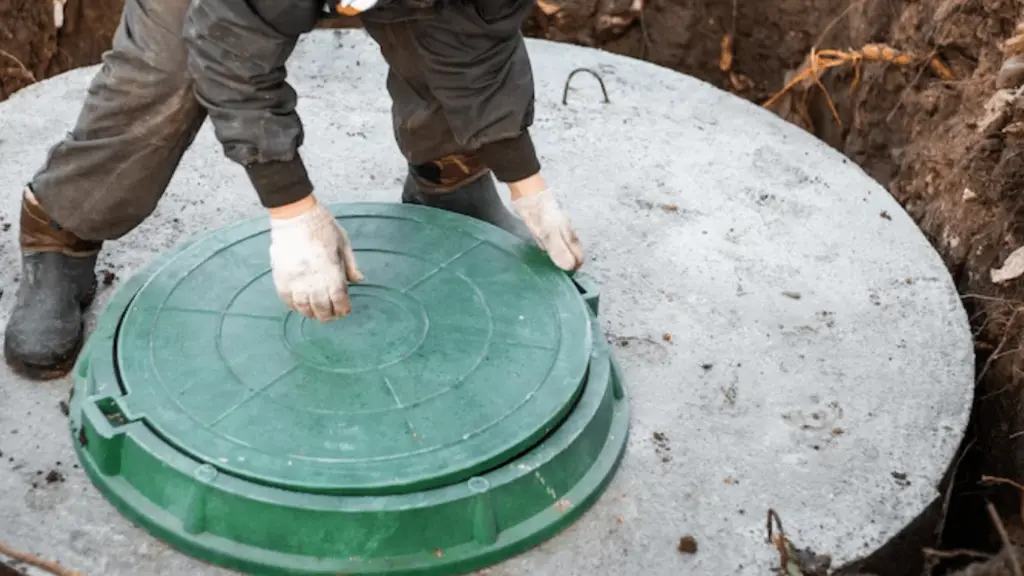Choosing the Right Well Cover for Cold Climates: Protecting Against Freezing

In cold climates, the importance of a well cover cannot be overstated. With harsh winters that can lead to freezing temperatures, ensuring your well system remains protected is crucial for maintaining a reliable water supply. A suitable well cover is a barrier against the elements, safeguarding the well and its components from extreme weather conditions.
Let’s explore how well covers prevent freezing, the best materials for cold weather, their role in improving water system efficiency, and the appropriate sizing to ensure optimal protection.
How Do Well Covers Prevent Freezing in Cold Climates?
Well, covers are critical in preventing freezing by providing an insulated barrier between the well water and the frigid outside temperatures. When temperatures drop, the water in the well is at risk of freezing, leading to many issues, including damaged pipes and decreased water supply. A well cover helps maintain a stable temperature around the wellhead, insulating the water and preventing it from reaching freezing point.
Additionally, well covers can minimize heat loss. Ground temperatures tend to be warmer than air temperatures, especially during winter. By covering the well, you are essentially trapping some of this natural warmth, which helps keep the water temperature from dropping too low.
Moreover, well covers can protect against wind exposure. Cold winds can significantly lower temperatures, contributing to the freezing of well water. A well-constructed cover helps shield the well from wind, further preventing the risk of freezing. In essence, a good well cover keeps the well insulated and provides a protective barrier against environmental elements that can lead to freezing issues.
What Materials Are Best for Well Covers in Cold Weather?
The material used when selecting a well cover for cold climates is crucial for ensuring effective insulation and durability. Several materials are commonly used for well covers, each offering different advantages.
1. Insulated Plastic:
Insulated plastic covers are popular due to their lightweight nature and excellent thermal resistance. They provide effective insulation, preventing heat loss and protecting against freezing temperatures. Additionally, plastic covers are resistant to rust and corrosion, making them a long-lasting choice for well-protection.
2. Metal Covers with Insulation
Metal well covers, particularly those made from galvanized steel or aluminum, can be excellent options when combined with insulation. While metal alone may not provide sufficient insulation, adding a layer of foam or other insulating materials can enhance their effectiveness in cold weather. Metal covers are sturdy and resistant to damage, making them a durable choice for long-term use.
3. Composite Materials
Composite materials combine various substances and can be effective for good covers. These materials often provide good insulation and resistance to weather-related wear and tear. They can mimic the appearance of wood while offering enhanced durability and less maintenance.
4. Wood Covers
Wood is a traditional choice for good covers but requires more maintenance to prevent rot and degradation over time. However, if properly treated and insulated, wooden covers can provide adequate protection against cold weather. Ensuring the wood is sealed and insulated to maximize its effectiveness is essential.
When choosing a well cover, it’s vital to consider the climate in your area and select a material that will withstand harsh conditions while providing the necessary insulation to prevent freezing.
Can Well Covers Improve the Efficiency of Water Systems in Freezing Conditions?
Yes, well covers can significantly improve the efficiency of water systems in freezing conditions. By providing insulation and protection, well covers help maintain stable water temperatures, reducing the likelihood of freezing and the associated issues. When water in a well freezes, it can lead to blockages and disruptions in the water supply, resulting in inefficiencies and the need for repairs.
A well-protected water system allows for a consistent water flow, ensuring homeowners have reliable access to their water supply, even during the coldest months. This reliability is especially important when water is used for essential activities such as heating, cooking, and sanitation.
Moreover, well covers can contribute to energy efficiency. If a well is prone to freezing, it may require additional heating methods, such as heat tape or heat lamps, to keep the water flowing. An effective well cover can reduce the need for these additional heating methods, leading to lower energy consumption and costs.
Furthermore, protecting the well system with a quality cover can extend the lifespan of the equipment and plumbing associated with the well. By minimizing the risk of freezing and the subsequent damage that can occur, homeowners can avoid costly repairs and replacements, ensuring the long-term efficiency of their water systems.
What size of well cover is suitable for protecting against cold temperatures?
Choosing the correct size for your well cover ensures optimal protection against cold temperatures. A well cover should fit securely over the wellhead without leaving gaps or spaces that could allow cold air to enter. Here are some considerations when selecting the appropriate size for your well cover:
1. Measure the Wellhead
Begin by measuring the diameter of your wellhead to determine the correct size for your cover. It’s essential to account for fittings or pipes that may protrude from the top of the well to ensure the cover fits comfortably.
2. Allow for Insulation
If you choose an insulated cover, ensure that the dimensions account for any additional thickness due to the insulating material. A well cover with adequate insulation will provide better protection against freezing temperatures.
3. Consider Accessibility
While ensuring a snug fit is important, it’s also crucial to consider how easy it will be to remove and replace the cover. If you need to access the well frequently for maintenance or inspection, select a cover that balances security with accessibility.
4. Look for Adjustable Options
Some good covers come with adjustable features that allow you to customize the fit. These options can be beneficial in accommodating varying well sizes and ensuring a tight seal against the elements.
By carefully measuring your well and selecting the appropriate size for your cover, you can maximize its effectiveness in protecting it from cold temperatures and freezing conditions.
Protect Your Well with Well Doctor LLC
Choosing the right well cover for cold climates is essential for safeguarding your water supply and ensuring the efficiency of your water systems. By understanding how well covers prevent freezing, selecting suitable materials, and determining the appropriate size, you can protect your well from harsh weather conditions.
At Well Doctor LLC, we are dedicated to helping you maintain the safety and functionality of your property. If you need assistance with good covers or any other pest control solutions, our expert team is here to help. Contact us today to learn more about how we can help you protect your well and ensure the quality of your water supply!



